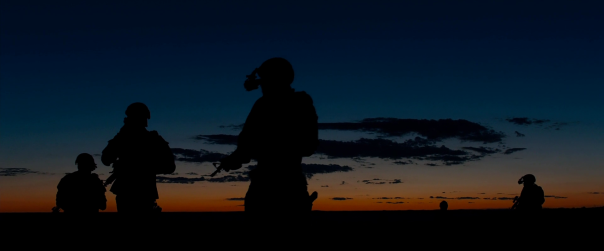This year’s visual effects Oscar race has been notable for lacking a clear frontrunner, and featuring one of the first ever animated films in contention for the Oscar. As we prepare to learn the results of this year’s Visual Effects ‘Bake-off,’ let’s first look back at the category’s rich history.
Every year since at least 1993, members of the Academy of Motion Picture Arts and Sciences Visual Effects Branch have met to produce a ‘shortlist’ of films that will contend for nominations for nominations for Best Visual Effects at the Oscars.
After making the shortlist, the teams behind each film selected must create a short “visual effects reel” explaining the process of creating the visual effects for that film. These reels are screened for Academy Visual Effects Branch members during a specific day in January. Following this screening, these branch members (who are all visual effects specialists) choose 3 (or 5 since 2010) films as the final nominees for Best Visual Effects. Because nominees are often chosen based on the strength of the reel presented, this category has often been prone to shocking twists and turns, inclusions and snubs. The history of the Visual Effects shortlists is a surprising and scandalous one. Remember that every film to make these shortlists had a viable shot at becoming an Oscar Nominee.
Variety’s David S. Cohen provided a nice breakdown of what helps a film succeed at a visual effects bake-off. Consider all these factors when looking back on previous VFX races, and on this year’s.
“– It helps if the movie is good.
– It helps even more if it’s a “serious” film from a prestigious director. The branch loves that.
– The branch doesn’t necessarily care if it’s a flop. “Evan Almighty” made the bake-off. So did “The Walk.”
– It helps if the film had good practical effects, or “special effects.” Those people vote, and they’re tired of their work being ignored.
– The order of presentation matters. If you go first, the voters may have trouble remembering you at the end, when it’s time to fill out the ballots. The order is determined by lottery, but can be tweaked to help out the projectionists, who have to switch among various aspect ratios, and change from 2D to 3D and back, depending on the film.
– Some reels are better than others. The best reels tell enough of the story for a viewer who hasn’t seen the film to get a sense of the story.
– Some presenters are better than others. Good visual effects films have fallen by the wayside because of bad presentations. On the other hand, skilled presenters like Rob Legato give their films a distinct advantage, irrespective of the quality of the film.
– Politics matter. Some companies benefit from great good will in the visual effects world (Industrial Light & Magic, for example). Others don’t. (Marvel seems to have a chilly relationship with the VFX rank-and-file.)”
1993:
Although the Visual Effects category had moved through a variety of identity shifts during the years of Oscar history, sometimes being offered as a special achievement award, other times honoring both sound and visuals, by 1993, AMPAS had settled into a system of releasing a shortlist of 7 films, and narrowing that list down to 3 final nominees through the bake off process. For a category ripe with snubs and surprises, it is fitting that possibly the first ever shortlist year would be scandal ridden.
The Fugitive was one of those rare big budget studio action films to manage a Best Picture Nominations (and Supporting Actor win), along with multiple technical nominations. Given the acclaim that its famous train crash sequence received, Tom Naud, the visual effects guru behind the crash sequence, assumed that his work was a shoo in for an Oscar Nomination, or at least for a place on the shortlist. He was wrong.
When The Super Mario Brothers, a critically maligned adaptation of the video game with visual effects that Variety referred to as “ok” managed a spot on the shortlist, along with the animated Nightmare Before Christmas, Hocus Pocus, and The Addams Family Values, over The Fugitive, Naud claimed there was a conspiracy against him, his film, and the technology (Introvision) he used to help create the crash sequence. His technology “uses projected images in front of and behind the actors, creating the illusion that the performer is inside the scene.” According to Naud, “ the visual effects branch [was] biased against his Introvision system. Naud said that the branch is made up primarily of technicians and designers in the optical effects business, who feel threatened by the Introvision process, which could encroach on their livelihood.”
Ultimately, the seven films to make the shortlist were
The Addams Family Values
Alive
Cliffhanger
Hocus Pocus
Jurassic Park*
The Nightmare Before Christmas
The Super Mario Bros
1994:
With the number of effects heavy blockbusters increasing every year, the 1994 Visual Effects Shortlist coincided with the announcement that the Academy Visual Effects members would become the first new Academy “branch” to be created in 42 years. This new branch oversaw a surprising shortlist that included The Lion King as the first (and only) 2-D Animated film ever to make the shortlist. Apparently, the revelation that the Wildabeest Stampede sequence was entirely CGI earned the film a place on the list. Also surprising was the inclusion of The Coen Brothers’ The Hudsucker Proxy on the list, particularly since the VFX heavy Stargate failed to make the list. (At the time, it was also considered surprising that The Flinstones failed to make the list)
Ultimately, the 7 films to make the list were:
Forrest Gump*
The Hudsucker Proxy
Interview with the Vampire
The Lion King
The Mask
Speed
True Lies
This year illustrated a long-running VFX Oscar trend of Best Picture nominees winning the Visual Effects Oscar over non-Best Picture Nominated films with flashier visual effects. (2015’s Ex Machina would become the first film since 1970 to buck this trend).
1995:
1995 is notable as the last time the Visual Effects category chose fewer than three nominees in the category. Although visual effects heavy films such as Jumanji, Waterworld, and Batman Forever were in contention, only Apollo 13 and Babe received Oscar nominations. Judge Dredd and The City of Lose Children failed to make the shortlist, despite their abundance of VFX work, as did Toy Story (although later Pixar films would). Roger Ebert ran a Q & A shortly after the announcement of only two Oscar Nominees, explaining how such a small nomination field had occurred:
Ultimately, the 7 films to make the list were:
1995:
Apollo 13
Babe*
Batman Forever
Casper
Jumanji
The Indian in the Cupboard
Waterworld
1996:
The 1996 shortlist offered relatively little intrigue. Independence Day was a clear frontrunner. Rick Baker’s makeup and prosthetic work (alongside subtle work by Rhythm & Hues visual effects house) in The Nutty Professor were apparently enough to earn the film consideration in the Best Visual Effects Category (the film would ultimately miss a nomination here, but would win an Oscar for Best Makeup). Similarly, Star Trek: First Contact would miss a nomination here, but was acknowledged for its makeup work. Tim Burton’s gleefully rubbery martian CGI was enough to ensure Mars Attacks! received a spot on the list. The only major shift was a new rule stipulating that voters were required to include at least three films as nominees, so as to avoid a situation like the previous year with only two nominees.
Ultimately, the 7 films to make the list were:
1996:
Dragonheart
Independence Day*
Mars Attacks!
Mission: Impossible
The Nutty Professor
Star Trek: First Contact
Twister
1997:
Whenever a James Cameron film is present in the Visual Effects race, it is usually all but certain that it will slaughter the visual effects competition. Titanic was the only possible winner here. Starship Troopers and The Lost World: Jurassic Park both managed nominations as well. The highlight of the shortlist, however, was Joel Schumacher’s Batman and Robin. Take a moment to ponder that. Batman & Robin, widely considered one of the worst films ever made, very nearly was nominated for an Oscar. Meanwhile, the effects-heavy Spawn and Alien: Resurrection failed to make the shortlist, making Resurrection the first ever Alien film to fail to receive an Oscar nomination.
In a December Visual Effects preview, Variety listed Men in Black as one of the ‘big three’ visual effects contenders, suggesting its ultimate snub for a nomination in this category came as a surprise. Apparently, “applying [motion-capture] to thousands of objects” was the big theme in evaluating the strongest visual effects contenders in 1997. Titanic’s massive CGI crowds, Jurassic Park’s herds of dinosaurs, and Starship Troopers’ hordes of ‘bugs’ ensured them slots over Men in Black’s seamless blending of prosthetics and CGI effects.
Ultimately, the 7 films to make the list were:
Batman and Robin
Contact
The Fifth Element
The Lost World: Jurassic Park
Men in Black
Starship Troopers
Titanic*
1998:
AMPAS established early on that the ‘Sin City’ trick of colorizing and de-colorizing aspects of a frame would not be enough to warrant inclusion on the visual effects shortlist. Despite receiving acclaim for its innovative work, Pleasantville failed to make the visual effects shortlist. The similarly subtle (if you can describe explosions as subtle) Saving Private Ryan failed to receive a mention on the shortlist despite winning the BAFTA for Visual Effects, removing any Best Picture contenders from the 1998 Visual Effects race. In fact, of the 7 films, only The Truman Show and (barely) Babe: Pig in the City received fresh scores on Rotten Tomatoes. The Truman Show was described as having been “in a class of its own” alongside the other contenders at the visual effects bakeoff with its subtle effects work. Michael Bay’s Armageddon received some extra press at the event for revealing that the famous Paris destruction sequence was added into the film just a month before its release.
Ultimately, the 7 films to make the list were:
Armageddon
Babe: Pig in the City
Godzilla
Small Soldiers
Mighty Joe Young
What Dreams May Come*
The Truman Show
1999:
According to a Variety article covering the announcement, 6 of the films on the 1999 visual effects shortlist were predictable. The seventh, a James Bond film with middling reviews, The World is Not Enough was apparently considered a surprise. Notably absent from the list were the airline explosions, and digital face-warping of Fight Club, and the aliens and space battles of Galaxy Quest. Again, only two of the films on that list, The Matrix and Stuart Little were ‘fresh’ on Rotten Tomatoes.
Ultimately, the 7 films to make the list were:
The Matrix*
The Mummy
Sleepy Hollow
Star Wars Episode 1: The Phantom Menace
Stuart Little
Wild Wild West
The World is Not Enough
2000:
2000 marked the first appearance of a superhero film on a visual effects shortlist (X-Men). Batman Returns and Superman had received nominations in the past, however (their nominations may have occurred before shortlists existed within the branch.) Meanwhile, Disney’s Dinosaur became only the third animated film to make the shortlist. Cast-Away surprised by making the list over Mission: Impossible 2, BAFTA nominee Crouching Tiger, Hidden Dragon, and Brian DePalma’s Mission to Mars.
Ultimately, the 7 films to make the shortlist were:
Cast-Away
Dinosaur
Dr. Seuss’s How The Grinch Stole Christmas
Gladiator*
Hollow Man
The Perfect Storm
X-Men
2001:
As Oscar entered into the new decade, with more easily accessible CGI technology, an ever-increasing number of effect-heavy films entered into the conversation. AI: Artificial Intelligence, Harry Potter and the Sorcerer’s Stone, Pearl Harbor, Jurassic Park III, and Cats & Dogs all made the shortlist due to their innovative uses of CGI. But the traditional pyrotechnics and stunts that had once dominated the category (pre-CGI) managed slots as well, with Black Hawk Down and The Fast and the Furious also making the list. (In total, the list featured eight films instead of the usual seven). Notably absent was the CGI saturation of The Mummy Returns (the only of the trilogy to fail to make the shortlist) and Tim Burton’s Planet of the Apes reboot. The semi-photorealistic CGI in Sony’s box-office bomb, Final Fantasy: The Spirits Within was also absent (though later mo-cap animations would not be). It is also worth noting that 2001 marked one of the last years where the majority of the shortlisted films boasted budgets below $100 million. Of the 7 films, only Pearl Harbor and Harry Potter and the Sorcerer’s Stone were made for more than $100 million.
Ultimately, the 7 films to make the shortlist were:
AI: Artificial Intelligence
Black Hawk Down
Cats & Dogs
The Fast and the Furious
Harry Potter and the Sorcerer’s Stone
Jurassic Park III
Lord of the Rings: The Fellowship of the Ring*
Pearl Harbor
2002:
2002 introduced AMPAS to an era where CGI was commonplace. As a result, the branch could become more choosey. A number of VFX-heavy films failed to make the Oscar shortlist. Among them: Reign of Fire, Gangs of New York, Catch Me If You Can, The Bourne Identity, Die Another Day, Scooby Doo, Stuart Little 2, Star Trek: Nemesis, Spy Kids 2: The Island of Lost Dreams, Blade 2, The Sum of All Fears, Eight Legged Freaks, and more would have likely found spots on shortlists in the previous decade with ease. Now they didn’t even receive a mention. Variety trumpeted Minority Report and XXX’s 300-400 visual effects shots total as an impressive achievement in its ‘Bake-off’ article. That number would of course be miniscule now. Spider-Man would ultimately continue past the shortlist become the first Marvel film to receive a nomination in this category.
Ultimately, the 7 films to make the shortlist were:
Harry Potter and the Chamber of Secrets
Minority Report
Men-in-Black 2
Spider-Man
Star Wars: Episode II: Attack of the Clones
Lord of the Rings: The Two Towers*
XXX
2003:
Having established over the previous two years, that even including a Visual Effects Shortlist were more of a formality than anything as long as Lord of the Rings was a part of the equation, the visual effects branch began to include some unusual choices from the wide array of visual effects options available in 2003. Warner Bros. feared the possibility of cancelling both Matrix sequels out in the category (as both were released in 2003), and therefore only submitted the critically maligned Revolutions, ignoring the slightly better-reviewed ‘Reloaded’ (probably for the best, given that we might have seen an Oscar nomination for this rubbery fight scene). The consideration was unnecessary, as the film failed to even make the shortlist of 7. Big Fish began its trend of underperforming with Oscar categories when it failed to snag a slot on the shortlist as well. Despite criticism of Ang Lee’s Hulk cgi in recent years, Variety described the CGI work as “one of the best digital humans (albeit outsized) created for the big screen.” The Cat in the Hat was ultimately snubbed (unlike its predecessor, The Grinch) by both the visual effects and makeup shortlists.
Ultimately, the 7 films to make the shortlist were:
Hulk
Lord of the Rings: The Return of the King*
Master & Commander: The Far Side of the World
Peter Pan
Pirates of the Caribbean: The Curse of the Black Pearl
Terminator 3: Rise of the Machines
X2: X-Men United
2004:
The Aviator’s inclusion on the 2004 shortlists for Makeup and Visual Effects demonstrated just how strong of a contender that film was for Best Picture until Million Dollar Baby began to pick up steam. Van Helsing and The Chronicles of Riddick may have been CGI-heavy, but the VFX branch opted to ignore them in favor of The Aviator’s more subtle work. The Bourne Supremacy and The Polar Express boasted slightly stronger reviews, but were snubbed as well. Meanwhile, Harry Potter and the Prisoner of Azkaban became the first film in the series to not only make the shortlist, but also to receive a nomination. Meanwhile, Spider-Man 2 became the first (and only) Marvel film ever to win an Oscar.
Ultimately, the 7 films to make the shortlist were:
The Aviator
The Day After Tomorrow
Harry Potter and the Prisoner of Azkaban
I, Robot
Lemony Snickett’s A Series of Unfortunate Events
Sky Captain and the World of Tomorrow
Spider-Man 2*
2005:
2005 was the Oscar season of shocks. Crash winning Best Picture, and Hustle & Flow taking Best Song were the two biggest stories on Oscar night, but weeks before, AMPAS had already managed to elicit a few gasps when the visual effects branch failed to nominate Star Wars: Revenge of the Sith for Visual Effects despite the film’s strong reviews, box-office numbers, and nominations from the Visual Effects Society and BAFTA. Instead, War of the Worlds (never underestimate Spielberg) and The Chronicles of Narnia managed nominations. 2005 held the distinction of being the only year in which every single film on the shortlist managed an Oscar nomination in one category or another.
Shockingly (at the time), Sin City failed to even make it to the shortlist. Robert Rodriguez would have joined Stanley Kubrick as one of the only directors ever to also receive a Visual Effects nomination, had the film received a nomination. One of the film’s VFX supervisors, Marc Sadeghi believed that “the seamlessness of the film’s digital effects may have hurt its prospects.” He argued that the film’s groundbreaking work was ‘misunderstood’ by voters.
Other snubs included Fantastic 4, Kingdom of Heaven, The Island, Stealth, and Zathura.
Ultimately, the 7 films to make the shortlist were:
Batman Begins
Charlie and the Chocolate Factory
The Chronicles of Narnia: The Lion, The Witch, and the Wardrobe
Harry Potter and the Goblet of Fire
King Kong*
Star Wars: Episode III: Revenge of the Sith
War of the Worlds
2006:
Not unlike 2001-2003, the 2006 Visual Effects Oscar winner was a foregone conclusion. Pirates of the Caribbean: Dead Man’s Chest received raves for its visual effects work. Its motion capture work on Bill Nighy’s Davy Jones was so realistic that some reviewers mistook the CGI for prosthetics.
In keeping with a predictable visual effects winner, the shortlist proved equally predictable. Only Charlotte’s Web, Pan’s Labyrinth, The Fountain, and Flags of Our Fathers missed out on the shortlist among particularly effects heavy films. Web managed a nomination from the Visual Effects Society (often a harbinger of a nomination), but failed to receive a BAFTA nomination in a field of 5 nominees. 5 of the 7 films on the shortlist were ‘rotten’ on Rotten Tomatoes.
Ultimately, the 7 films to make the shortlist were:
Casino Royale
Eragon
Night at the Museum
Pirates of the Caribbean: Dead Man’s Chest*
Poseidon
Superman Returns
X-Men: The Last Stand
2007:
2007 marked a major change in the Visual Effects voting system. In keeping with an increasing number of VFX-heavy films being released every year, AMPAS would release a list of 15 films before narrowing down the contenders to the traditional shortlist of 7 and then to the final 3 nominees. With a new system, and an increased variety of films to choose from came more diverse choices. Ratatouille became Pixar’s first (and only) film ever to make the shortlist. Robert Zemeckis’s Beowulf became the first motion capture film to make the list. National Treasure: Book of Secrets and The Bourne Ultimatum managed spots on the list as well, despite not having appeared on the list with earlier installments in either series. Visual Effects heavy blockbusters such as Fantastic 4: Rise of the Silver Surfer, Bridge to Terebithia, Stardust, and Enchanted failed to make the first round.
With this new two-step process came more surprising picks for the second phase of the list (part 2, the shortlist of 7). After Spider-Man 2 won the visual effects Oscar in 2004, Spider-Man 3 failed to make the shortlist of 7, despite making the first-round list. Similarly, Harry Potter and the Order of the Phoenix became the only film in the entire franchise to fail to make the final shortlist, despite its much-discussed “soul capture” technology. Instead, I am Legend’s divisive CGI work and the water effects in the poorly reviewed Evan Almighty made it to the category’s semifinals. And in keeping with a surprising year for the category, the ultimate winner, The Golden Compass, would prove to be one of the category’s most surprising winners in history.
Ultimately, the 15 films to make the first round were:
300
Beowulf
The Bourne Ultimatum
Evan Almighty
The Golden Compass*
Harry Potter and the Order of the Phoenix
I am Legend
Live Free or Die Hard
National Treasure: Book of Secrets
Pirates of the Caribbean: At World’s End
Ratatouille
Spider-Man 3
Sunshine
Transformers
Waterhorse: Legend of the Deep
And the 7 films to make the second round were:
300
The Bourne Ultimatum
Evan Almighty
The Golden Compass*
I am Legend
Pirates of the Caribbean: At World’s End
Transformers
2008:
2008 became the first year to signify the industry’s superhero movie saturation, with no fewer than five superhero films making the first list. Hancock, The Dark Knight, Hellboy 2, The Incredible Hulk, and Iron Man all snagged spots on the list. But films with more divisive CGI also managed spots. Journey to the Center of the Earth and The Mummy: Tomb of the Dragon Emperor, and Indiana Jones & the Kingdom of the Crystal Skull all managed to find spots on the first round of the list over the likes of Wanted. Speed Racer, 10,000 BC, despite an abundance of CGI (and Oscar wins for previous films from their directors) failed to make either round of shortlist.
The final list of seven proved surprising, with Australia, Journey to the Center of the Earth, and The Mummy: Tomb of the Dragon Emperor ultimately managing surprise spots on the list over more expected picks like The Chronicles of Narnia: Prince Caspian. Journey likely secured its slot through its innovative use of 3D, making it the first 3D feature ever screened at the “bake-off.” Australia revealed that roughly a third of every shot in the film featured CGI. Which of course meant that the final 3 nominees were easy to predict: The Curious Case of Benjamin Button, The Dark Knight, and Iron Man.
Ultimately the 15 films to make the first round were:
Australia
The Chronicles of Narnia: Prince Caspian
Cloverfield
The Curious Case of Benjamin Button*
The Dark Knight
The Day the Earth Stood Still
Hancock
Hellboy II: The Golden Army
The Incredible Hulk
Indiana Jones and the Kingdom of the Crystal Skull
Iron Man
Journey to the Center of the Earth
The Mummy: Tomb of the Dragon Emperor
The Quantum of Solace
The Spiderwick Chronicles
And the 7 films to make the second round were:
Australia
The Curious Case of Benjamin Button
The Dark Knight
Hellboy II: The Golden Army
Iron Man
Journey to the Center of the Earth
The Mummy: Tomb of the Dragon Emperor
2009:
The 2009 VFX race proved notable for several reasons: first, it had a winner locked up for roughly half of the year. Even before Avatar had premiered and its potential for financial success was uncertain, many had it penciled in for a Visual Effects win because of the talk surrounding its groundbreaking technology. Secondly, it became the final year to only feature three nominees in the category.
As a significant year, the branch again offered some unorthodox choices. The Lovely Bones foreshadowed its disappointing awards season performance by failing to even make the category’s shortlist of 15, (as did Night at the Museum 2, which bizarrely managed a spot on the Makeup shortlist instead.) Meanwhile, animated films such as Coraline and A Christmas Carol did end up on the list. The poorly reviewed Disney film, G-Force managed a slot, as did the subtle VFX work in Angels and Demons. Surprisingly, GI Joe: The Rise of Cobra managed a spot on the list, despite featuring effects that The Guardian called “substandard” and Roger Ebert referred to as “incomprehensible.”
In a particularly strong year for the category, films with acclaimed visual effects work like Watchmen would fail to advance to the second round. 2009 illustrated a clear trend at the time as well. CGI Destruction was no longer enough to guarantee a spot in the category. Realistic CGI characters were all the rage.
Ultimately the 15 films to make the first round were:
Angels & Demons
Avatar*
A Christmas Carol
Coraline
District 9
G-Force
GI Joe: The Rise of Cobra
Harry Potter and the Half Blood Prince
Sherlock Holmes
Star Trek
Terminator Salvation
Transformers: Revenge of the Fallen
2012
Watchmen
Where the Wild Things Are
And the 7 films to make the second round were:
Avatar*
District 9
Harry Potter and the Half Blood Prince
Star Trek
Terminator Salvation
Transformers: Revenge of the Fallen
2012
2010:
2010 proved a historic year for the visual effects categories. As nearly every category (including Sound Editing in 2006) had expanded to allow 5 nominees, it seemed absurd to only permit 3 nominees in a category that consistently featured more than 3 nomination-worthy visual effects efforts. As a result, the category finally expanded to allow 5 nominees, but maintained the three-step shortlist and bake-off process.
The only potentially surprising omission from the initial shortlist was the BAFTA nominated VFX work in Black Swan, while the “small” work in Hereafter surprised repeatedly by making both shortlists, and ultimately securing a nomination, illustrating a trend of one “shocker” nominee making it into the visual effects race every year from then forward. Harry Potter and the Deathly Hallows Part 1 would become only the second Harry Potter film in the series to secure a Visual Effects nomination.
In a post-Avatar world, a number of the films in contention were presented in 3D (remember, in 2010 and 2011, more or less everything was released in 3D). Where just two years before, finding a way to screen a single 3D film had been a concern, the branch had to instead prep for a world where 3D blockbusters were rapidly becoming the norm. Of the 15 films on the shortlist, 5 were 3D efforts (Alice in Wonderland, The Chronicles of Narnia: The Voyage of the Dawn Treader, Clash of the Titans, The Last Airbender, and TRON: Legacy.) Perhaps, the VFX branch was slow to embrace change, however, as only one of the 5 nominated films (Alice in Wonderland) was a 3D effort, and a perceived category frontrunner, TRON: Legacy (3D) failed to even land a nomination. TRON’s surprising snub echoed a frustrating trend for the franchise. The original film ironically failed to receive a nomination because the Academy’s Visual Effects voters at the time considered the film’s use of CGI to have been ‘cheating.’ This time, the sequel may have suffered backlash for its heavy use of CGI, as the emphasis on Jeff Bridges’ CGI de-aging during the Bake-off reel was reportedly met with laughter.
Ultimately the 15 films to make the first round were:
Alice in Wonderland
The Chronicles of Narnia: The Voyage of the Dawn Treader
Clash of the Titans
Harry Potter and the Deathly Hallows Part 1
Hereafter
Inception
Iron Man 2
The Last Airbender
Percy Jackson & The Olympians: The Lightning Thief
Prince of Persia: The Sands of Time
Scott Pilgrim vs the World
Shutter Island
The Sorcerer’s Aprentice
Tron: Legacy
Unstoppable
And the 7 films to make the second round were:
Alice in Wonderland
Harry Potter and the Deathly Hallows Part 1
Hereafter
Inception *
Iron Man 2
Scott Pilgrim vs the World
Tron: Legacy
2011:
In 2011, AMPAS realized it would be better served by expanding the second phase of the visual effects decision making process into a list of 10 films, as opposed to a list of 7 (since it seemed to limit the process by only having two films in contention that would not make the cut. As a result, a number of atypical contenders found their way to the list. Prestige pictures like Hugo and The Tree of Life made it to both rounds of the voting process, while critically reviled efforts like Zach Snyder’s Sucker Punch showed up on the first list as well. Marvel’s Thor surprisingly failed to make it to the second round of voting. WB’s bomb, Green Lantern was the only big budget, CGI-heavy feature to fail to show up on either list.
Harry Potter and the Deathly Hallows Part 2 survived an embarrassing SNAFU during the annual bake-off screening, when WB accidentally screened the Makeup reel instead of the Visual Effects reel. Despite this mishap, the film ultimately received the franchise’s third visual effects nomination, but would fail to win, leaving the series Oscar-less. Meanwhile, Hugo proved that a prestige picture will generally win when running against traditional visual effects contenders and blockbusters. Though Transformers 3 and particularly Rise of the Planet of the Apes featured groundbreaking CGI and motion capture work, Hugo’s overall love within the AMPAS voting body secured it a win in a category that it might not have even received a nomination in during the 3-nominee system.
Again, the new five nominee system showed off its capacity for surprises. After Pirates of the Caribbean: On Stranger Tides received a Visual Effects Society nomination, and bake-off reports emphasized strong reactions to the “shrinkage” work in Captain America: The First Avenger, few expected the robot boxing movie, Reel Steel to best either contender and show up as an Oscar nominee out of nowhere.
Ultimately, the 15 films to make the first round were:
Captain America: The First Avenger
Cowboys & Aliens
Harry Potter and the Deathly Hallows Part 2
Hugo*
Mission: Impossible – Ghost Protocol
Pirates of the Caribbean: On Stranger Tides
Real Steel
Rise of the Planet of the Apes
Sherlock Holmes: A Game of Shadows
Sucker Punch
Super 8
Thor
Transformers: Dark of the Moon
The Tree of Life
X-Men: First Class
And the 10 films to make the second round were:
Captain America: The First Avenger
Harry Potter and the Deathly Hallows Part 2
Hugo*
Mission: Impossible – Ghost Protocol
Pirates of the Caribbean: On Stranger Tides
Real Steel
Rise of the Planet of the Apes
Transformers: Dark of the Moon
The Tree of Life
X-Men: First Class
2012:
Starting in 2012, AMPAS opted to forgo the 15-film shortlist system, instead narrowing the list down to 10 films as early as November. There were little in the way of surprising snubs this time around. Men in Black 3 and The Impossible were the only major effects films to miss out.
The Dark Knight Rises held strong to its traditional trappings, proudly screening as the only contender still shot on film. The heavily digital Snow White and the Huntsman ultimately surprisingly snagged a nomination over it, however, leaving the final installment in Nolan’s trilogy nomination-less. The 2012 Visual Effects race was of course marred by controversy, as the Oscar winning VFX team for Life of Pi lamented that they had recently gone bankrupt prior to winning, only to be played off during their acceptance speech before completing their message.
Ultimately, the 10 films to make the shortlist were:
The Amazing Spider-Man
Cloud Atlas
The Dark Knight Rises
The Hobbit: An Unexpected Journey
John Carter
Life Of Pi*
Marvel’s The Avengers
Prometheus
Skyfall
Snow White And The Huntsman
2013:
The most surprising commission from AMPAS’s list of 10 films was WB’s Man of Steel. In its place were the critically reviled The Lone Ranger, and the financially disappointing Oblivion.
While many expected Pacific Rim to receive a nomination for its enormous CGI robots, it was ultimately The Lone Ranger that became the annual surprise nominee instead, alongside The Hobbit, Iron Man 3, Star Trek Into Darkness, and eventual winner, Gravity. According to reports from the bake-off screening, it was the film’s signature train fight that particularly impressed viewers.
Ultimately, the 10 films to make the shortlist were:
“Elysium,”
“Gravity,” *
“The Hobbit: The Desolation of Smaug,”
“Iron Man 3,”
“The Lone Ranger,”
“Oblivion,”
“Star Trek Into Darkness,”
“Thor: The Dark World,”
“Pacific Rim,”
“World War Z”
2014:
2014 would be the last year when AMPAS would utilize the single 10-film shortlist method. The only surprising ommissions were Ridley Scott’s Exodus, and Tom Cruise’s financially underperforming sci fi, Edge of Tomorrow. Night at the Museum 3 surprisingly managed a slot, despite the previous (more successful) film missing out on the 2009 list.
Although this year marked the first time one of Peter Jackson’s Middle Earth films missed a slot on a nominations, it also marked the first time an X-Men film received a nomination following years of X-men near misses. Apparently, the “quicksilver” sequence wowed VFX voters at the bake-off. This was also the first time in several years a “prestige” film was not in the mix, with none of the 10 films even making the Best Picture conversation.
Ultimately the 10 films to make the list were:
“Captain America: The Winter Soldier”
“Dawn of the Planet of the Apes”
“Godzilla”
“Guardians of the Galaxy”
“The Hobbit: The Battle of the Five Armies”
“Interstellar”*
“Maleficent”
“Night at the Museum: Secret of the Tomb”
“Transformers: Age of Extinction”
“X-Men: Days of Future Past”
2015:
In 2015, the visual effects branch again changed up the voting system, this time beginning with a shortlist of 20 films, as part of an attempt to reflect the ever-increasing number of effects heavy work. As a result, Furious 7 became the first film in the series since the original to make an Academy Visual Effects list, while The Hunger Games: Mockingjay Pt. 2 also ended up as the only film in its franchise ever to show up on the list. Subtle work like Bridge of Spies also made its way to the list. And the critically reviled Terminator Genisys even managed a slot. With 20 slots to choose from, it was particularly telling if any major VFX heavy films missed out. The Wachowski’s Jupiter Ascending followed brutal reviews by failing to show up on the list at all, as did Pan and Fantastic 4. Despite financial success, The Rock’s disaster film, San Andreas could not manage a nomination either.
The shortlist would ultimately blossom into the category’s tightest, and ultimately most surprising Oscar race in years. Mad Max and Star Wars seemed engaged in a life or death struggle, with Star Wars promising to become the first non Best Picture nominated Visual Effects nominee to beat a Best Picture nominee for the first time since 1970. Perhaps, it was this new voting system that allowed the low-budget Ex Machina to surprise by making it not only past the first round of the VFX shortlist, but to also receive a nomination, and then beat four films that by all appearances had stronger chances at a win than it did.
Ultimately, the 20 films to make the first round were:
Ant-Man
Avengers: Age of Ultron
Bridge of Spies
Chappie
Everest
Ex Machina*
Furious 7
The Hunger Games: Mockingjay – Part 2
In the Heart of the Sea
Jupiter Ascending
Jurassic World
Mad Max: Fury Road
The Martian
Mission: Impossible – Rogue Nation
The Revenant
Spectre
Star Wars: The Force Awakens
Terminator Genisys
Tomorrowland
The Walk
The 10 films to make the second round were:
Ant-Man
Avengers: Age of Ultron
Ex Machina*
Jurassic World
Mad Max: Fury Road
The Martian
The Revenant
Star Wars: The Force Awakens
Tomorrowland
The Walk
2016:
Finally, this year featured yet another first round of 20 films. Kubo and the Two Strings surprised on the list as the first animated film since 2009 to make the longlist, and the first animated film since 2000 to make the shortlist. Multiple critical bombs made the first round, including Alice: Through the Looking Glass, Batman vs Superman, Independence Day: Resurgence, Suicide Squad, and Warcraft, but none made it to the second round. The well-reviewed, but financially disappointing A Monster Calls was the only major omission from the longlist.
AWN.com offers complete breakdown of the 10 presentations. Kris Tabley of Variety reports that Deepwater Horizon and Star Wars: Rogue One received some of the biggest responses from the bake off. The BFG’s response seemed tepid. And Kubo and the Two Strings reportedly impressed. Deepwater was reportedly the highlight of the bake off.
Ultimately, the 20 films to make the first round were:
Alice through the Looking Glass
Arrival
The BFG
Batman v Superman: Dawn of Justice
Captain America: Civil War
Deadpool
Deepwater Horizon
Doctor Strange
Fantastic Beasts and Where to Find Them
Independence Day: Resurgence
The Jungle Book
Kubo and the Two Strings
Miss Peregrine’s Home for Peculiar Children
Passengers
Rogue One
Star Trek Beyond
Suicide Squad
Sully
Warcraft
X-Men: Apocalypse
And the 10 films to make the second round were:
“Arrival”
“The BFG”
“Captain America: Civil War”
“Deepwater Horizon”
“Doctor Strange”
“Fantastic Beasts and Where to Find Them”
“The Jungle Book”
“Kubo and the Two Strings”
“Passengers”
“Rogue One: A Star Wars Story”
With all of this history in mind, will we see the second animated film in VFX history receive a nomination? Will Fantastic Beasts become the fourth Harry Potter film to be nominated? Only time will tell. Hopefully this year’s race will bring some attention to the category’s rich history.
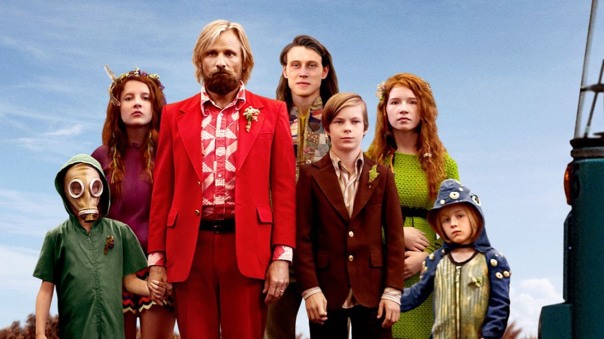
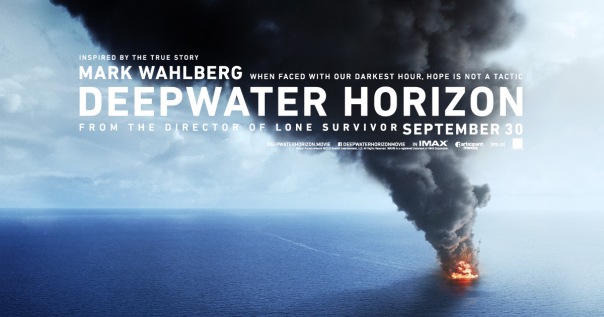
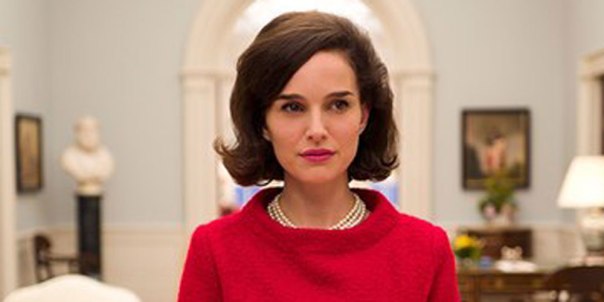
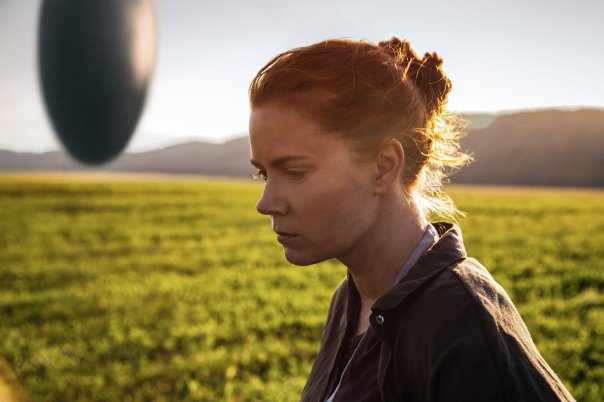
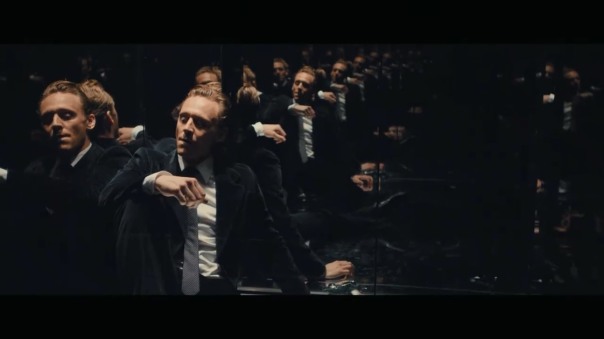
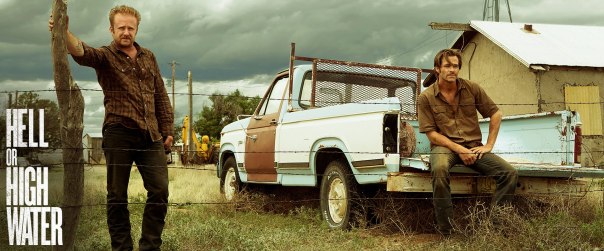
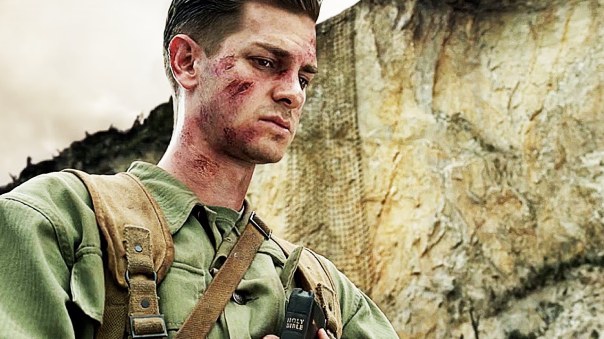
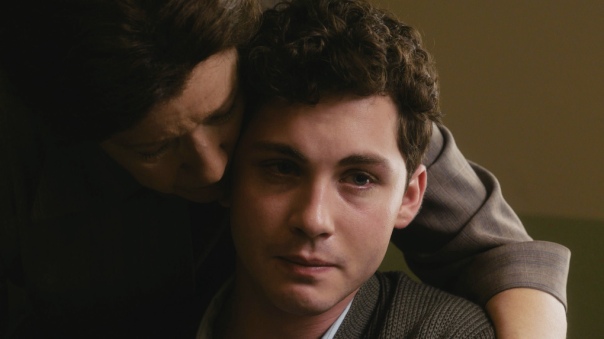
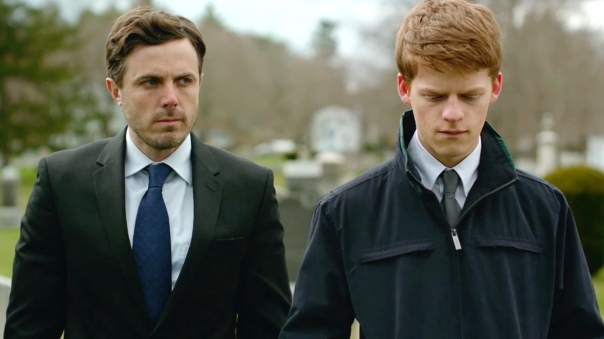

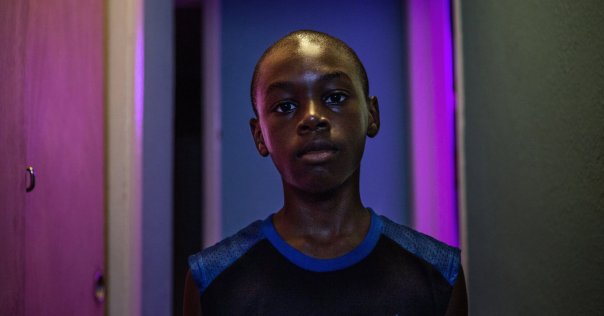
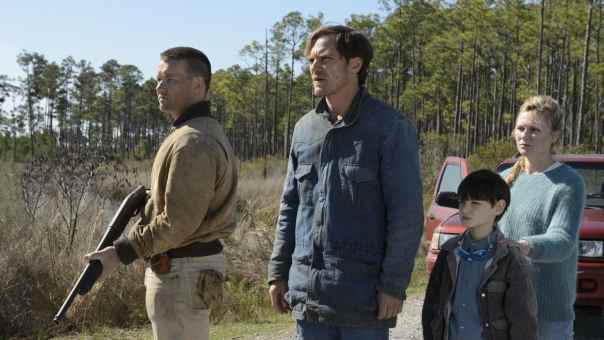
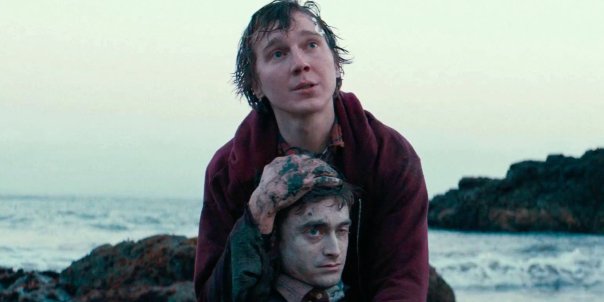
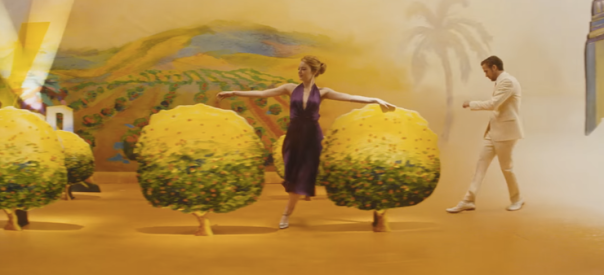
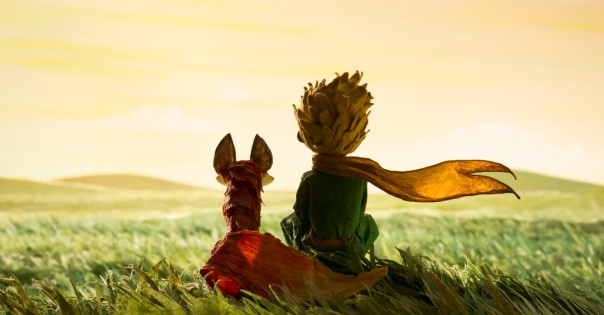
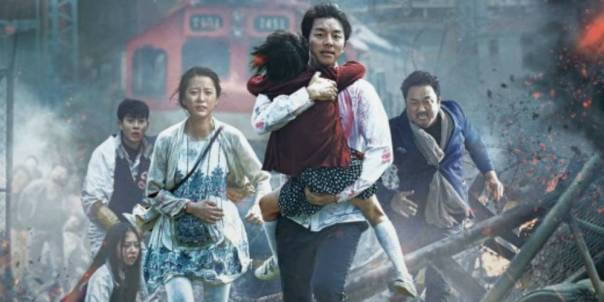
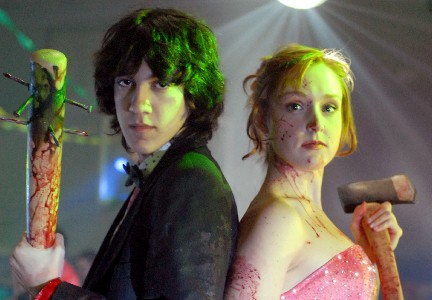
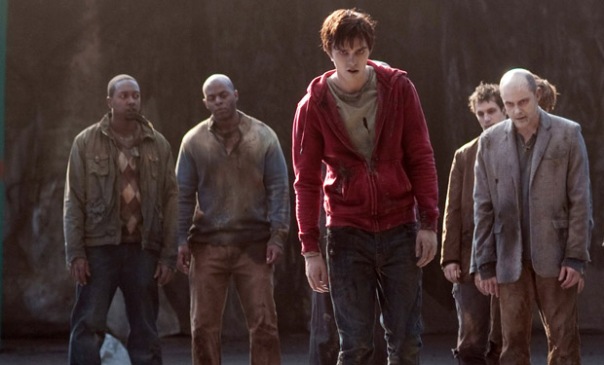



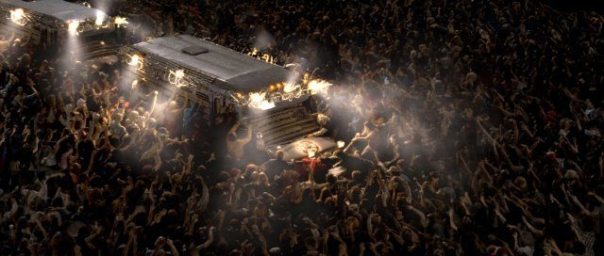

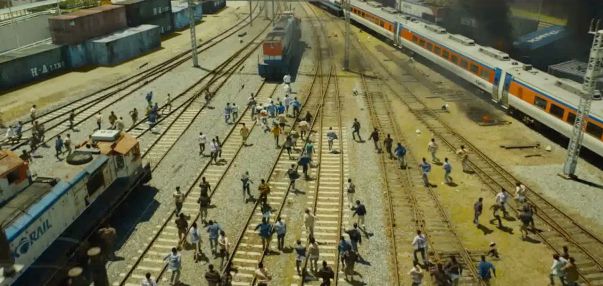
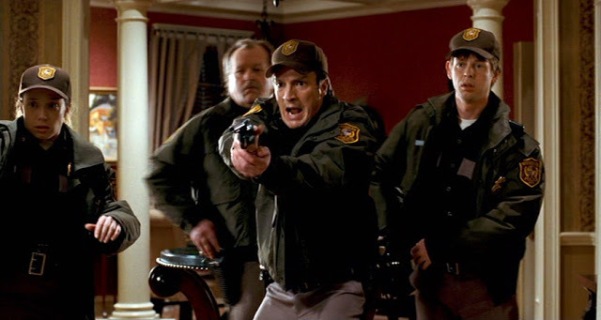
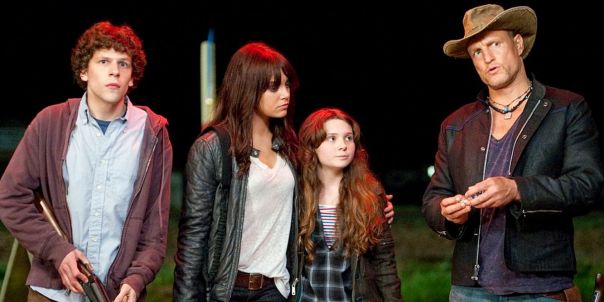
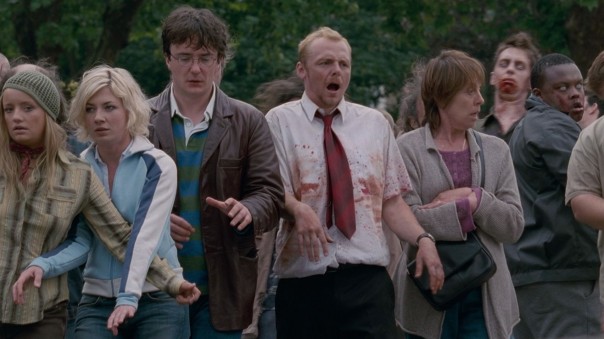

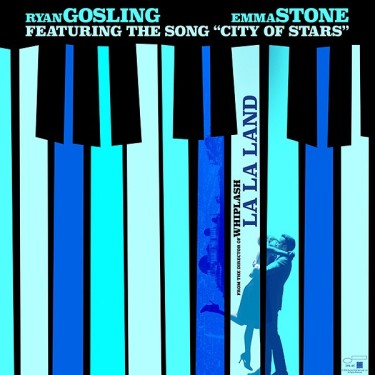
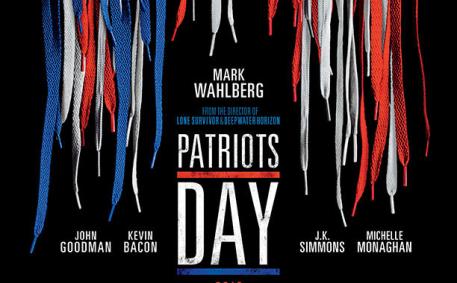
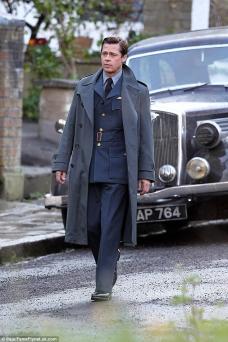 The script for Robert Zemeckis’s Brad Pitt/Marion Cotillard WWII drama, Allied, written by Steven Knight (Eastern Promises, Locke) has been floating around, and is being
The script for Robert Zemeckis’s Brad Pitt/Marion Cotillard WWII drama, Allied, written by Steven Knight (Eastern Promises, Locke) has been floating around, and is being 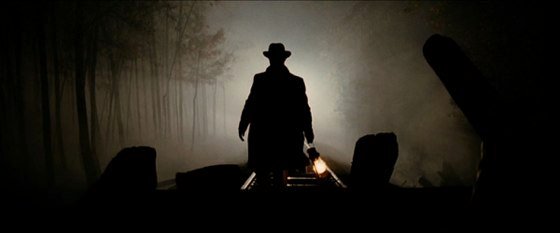
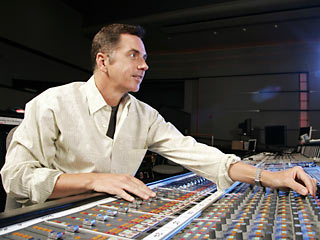
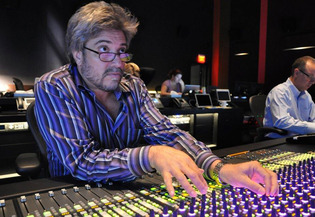
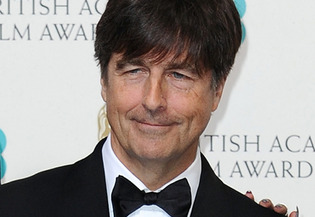
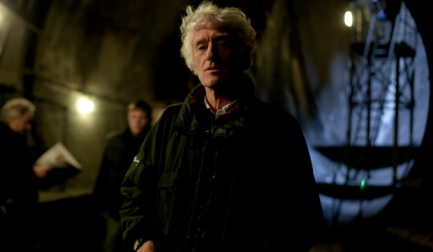
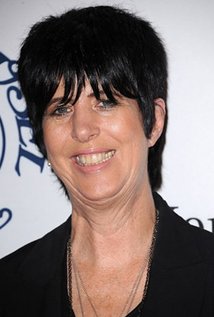
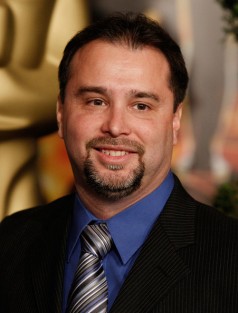
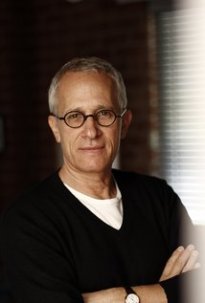
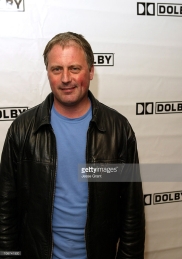
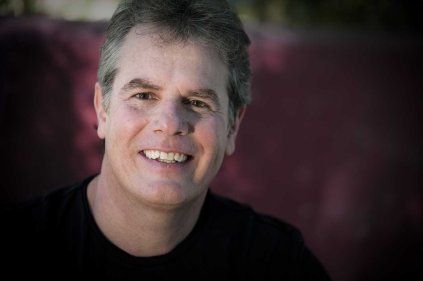
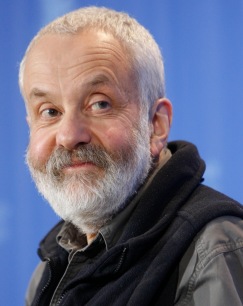
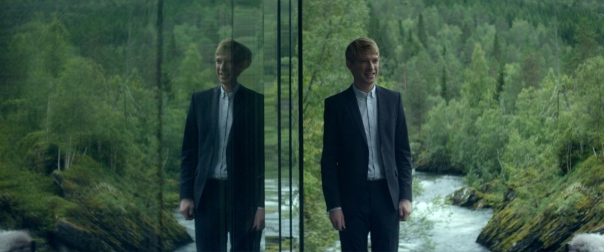
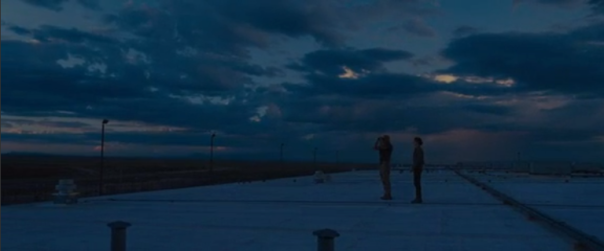
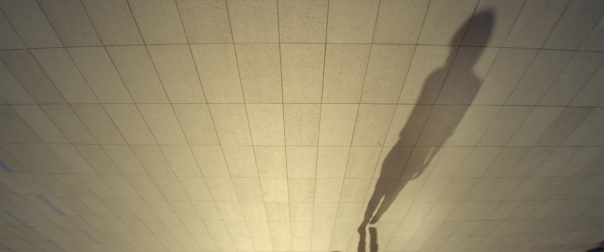
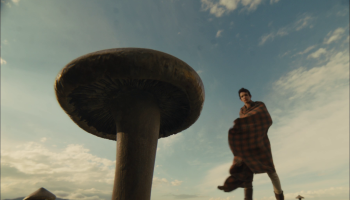
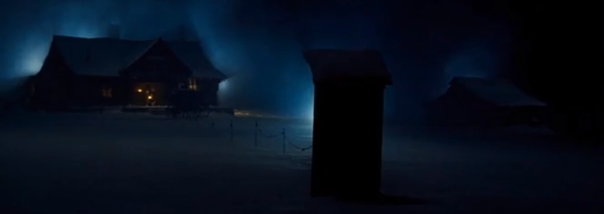
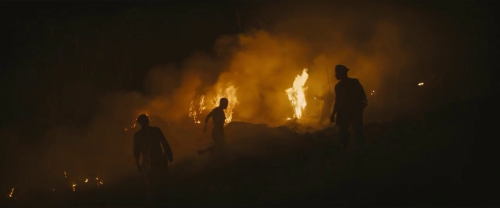
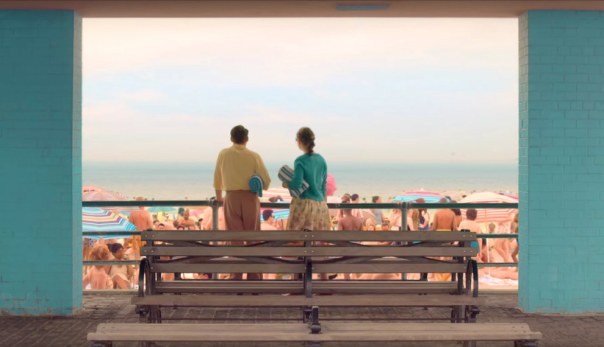
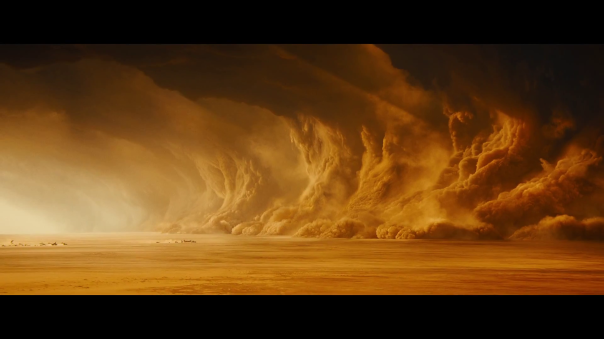
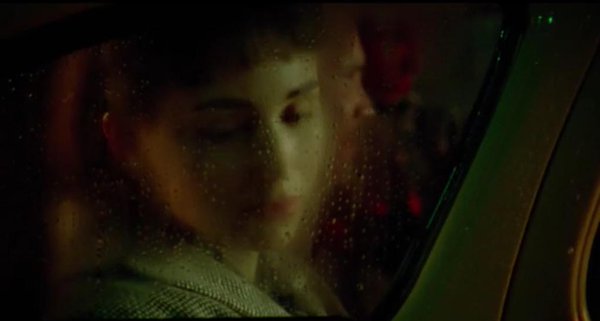
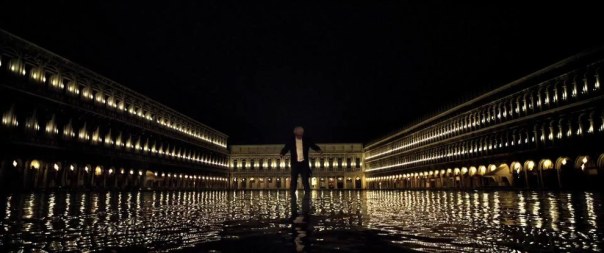
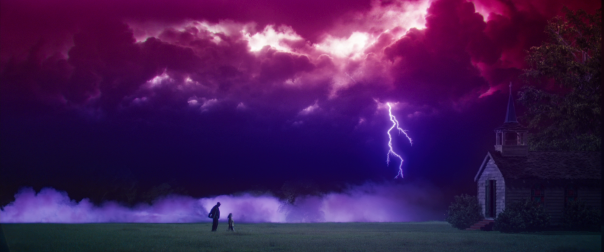
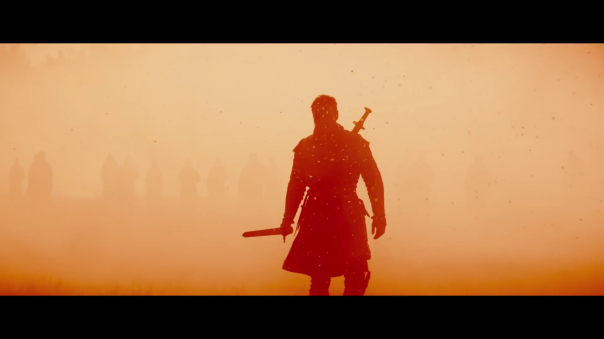
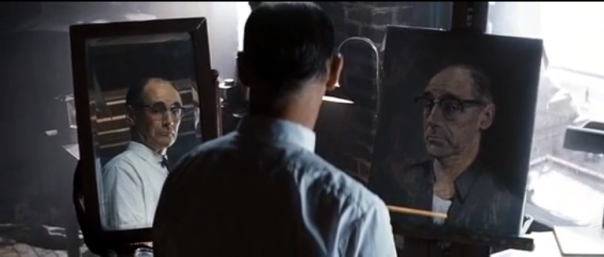
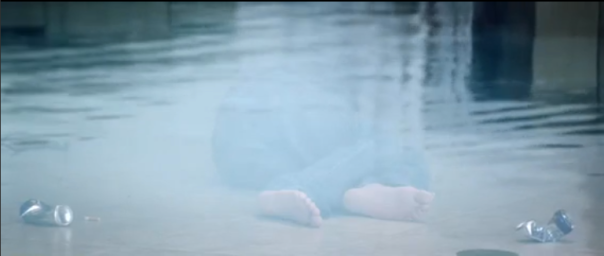 1. Sicario
1. Sicario